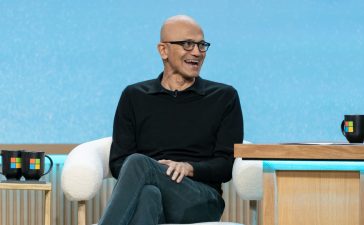“No authorisation or frequency assignment shall be required to establish, maintain, work, possess or deal in any wireless equipment for the purpose of Lower Power Indoor and Very Low Poweroutdoor wireless access systems, including radio local area networks operating in the frequency band 5925-6425 MHz on noninterference, non-protection and shared (nonexclusive) basis…,” the draft notification said stipulating some technical parameters.
For Low Power Indoor devices, the power output is proposed to be capped at 30 dBm or decibel-milliwatts (vs. 53 dBm in 5 GHz) to avoid interference.
It has also spelt out some operational restrictions, prohibiting use on oil platforms, among them.
“…Indoor use is prohibited on Land vehicles (that is cars, trains) and boats, aircraft except when flying above 10,000 feet…Communication with and control of Drones and Unmanned Aerial Systems is prohibited,” it said.
The ITU-APT Foundation of India (IAFI) described the decision to delicense the lower 500 MHz of the 6 GHz band as “visionary” and said it paves the way for unlicensed use of this critical mid-band spectrum by low power and very low power wireless access systems, including next-generation Wi-Fi technologies such as Wi-Fi 6E and Wi-Fi 7. IAFI said it has been a firm advocate for delicensing the lower 6 GHz band for several years, given the tremendous potential of this spectrum to unlock new possibilities for digital inclusion, local manufacturing, and economic growth. “This bold move by the government is a game-changer for India’s digital future. This decision aligns India with over 100 countries that have already opened up the 6GHz band, including the US, UK, South Korea, and members of the EU,” Bharat Bhatia, President of IAFI, said.
According to IAFI, the 6 GHz band offers a vast and clean swath of spectrum-free from legacy congestion in the traditional 2.4 GHz and 5 GHz Wi-Fi bands. Its availability is critical to meet the surging demand for bandwidth from data-intensive applications such as 4K streaming, AR/VR (augmented reality/virtual reality), online gaming, Internet of Things services, and high-resolution video conferencing.
“Wi-Fi 6E, operating in this newly delicensed band, promises speeds of up to 9.6 Gbps, ultra-low latency, and greater capacity, delivering a quantum leap in user experience and digital productivity,” IAFI said in a statement.
Industry body BIF said the government’s draft notification to exempt the 5925-6425 MHz band from licensing is a move long-overdue, but was quick to point out that “a fraction of the band cannot deliver the full-scale impact we seek”.
It is much-needed first step towards unlocking the “immense potential” of the 6 GHz band for India’s digital and economic transformation, and places India on the same path taken by over 84 nations that have already delicensed either part or all of this band, it said on the delicencing move.
BIF, however, added in the same breath that the complete benefits of license exemption of 6GHz spectrum band can only be realised when at least an additional 160 MHz is delicensed – taking the total to at least 660 MHz.
“While a notable milestone, this is just the prologue to the full story. The true transformative power of the 6GHz band can only be harnessed when we move beyond this initial suboptimal chunk of 500 MHz,” said TV Ramachandran, President BIF said in a release.
Delicensing the additional portion as suggested will ensure that at least two users could get a 320 MHz wide channel simultaneously for high-speed applications and data usage and will also ensure that any combination of channel bandwidths of 320, 160 and 80 MHz could be used for deployment of advanced Wi-Fi technologies, Ramachandran added.
“An adequate chunk of delicensed 6 GHz band is required in order to power next-generation technologies like Wi-Fi 6E and Wi-Fi 7 which are set to become foundational to our Digital Public Infrastructure. This would serve as the backbone for delivering affordable, high-speed, low-latency connectivity-powering smart schools, hospitals, factories, cities and villages and breathe life into the vision of Viksit Bharat,” he added.










